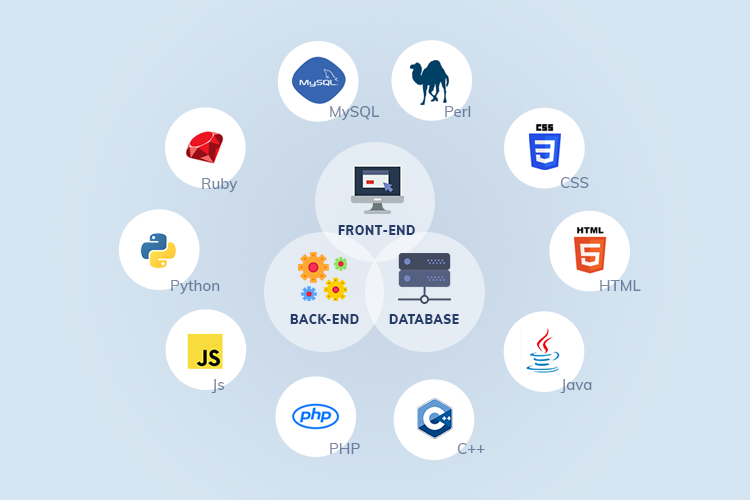Rise by Six: Your Daily Dose of Inspiration
Explore insights and stories that elevate your day.
From Zero to Hero: Your Journey in Full-Stack Development
Transform your skills from novice to expert! Discover the ultimate roadmap to mastering full-stack development today!
Essential Skills Every Full-Stack Developer Should Master
Full-stack developers play a crucial role in the tech industry, combining expertise in both frontend and backend technology. To excel in this diverse field, there are several essential skills that every full-stack developer should master. Firstly, a strong foundation in HTML, CSS, and JavaScript is vital for creating responsive and user-friendly interfaces. These technologies form the cornerstone of web development and are essential for building engaging client-side experiences. Additionally, familiarity with frontend frameworks like React or Angular can significantly enhance a developer's efficiency and productivity.
On the backend, proficiency in server-side languages such as Node.js, Python, or Java is crucial. Alongside programming languages, understanding database management systems, such as MySQL or NoSQL solutions like MongoDB, is essential for effective data handling. Moreover, full-stack developers should also have a good grasp of version control systems, like Git, to collaborate efficiently with teams. Finally, strong problem-solving skills and a willingness to learn new technologies are key attributes that can pave the way for success in this ever-evolving field.

Common Pitfalls to Avoid on Your Full-Stack Development Journey
Embarking on your full-stack development journey can be both exciting and daunting. However, many aspiring developers fall into common pitfalls that can hinder their progress. One major mistake is failing to establish a solid understanding of the basics. Before diving into complex frameworks and tools, take time to master HTML, CSS, and JavaScript. These foundational technologies are the building blocks of web development and will greatly enhance your ability to tackle advanced concepts later. Additionally, neglecting to practice regularly can lead to stagnation in your skills. Consider setting aside time each week to work on personal projects or contribute to open-source initiatives to reinforce your learning.
Another common pitfall is underestimating the importance of version control systems, such as Git. Many new developers either avoid using these systems or fail to learn them properly, which can lead to lost code and collaboration issues. Embracing version control from the onset will facilitate smoother development processes and improve team collaboration. Additionally, beware of the temptation to rely too heavily on frameworks without grasping their underlying principles. While libraries and frameworks can speed up development, a strong understanding of the core technologies will allow you to troubleshoot effectively and adapt to different environments. To summarize, take the time to build a solid foundation, utilize version control, and always strive to understand the intricacies behind the tools you use.
How to Build Your First Full-Stack Application: A Step-by-Step Guide
Building your first full-stack application might seem daunting, but with a clear step-by-step approach, you can simplify the process. Start by deciding on the application you want to build; this could range from a simple to-do list to a more complex e-commerce site. Next, outline the features you want to include, and choose your tech stack. A popular combination is HTML, CSS, and JavaScript for the front end, with Node.js and Express for the back end, and a database like MongoDB. By specifying your tech choices early, you can streamline learning and development.
Once you've planned your tech stack, begin with the frontend. Use HTML to structure your application, CSS to handle aesthetics, and JavaScript for interactivity. After your frontend is functioning, move on to setting up your backend. Create an API using Express that interacts with your database, allowing you to store and retrieve data for your application. Finally, ensure you've implemented version control using Git, which is crucial for managing your code and collaborating with others. By following these steps, you'll have a solid foundation for your first full-stack application.